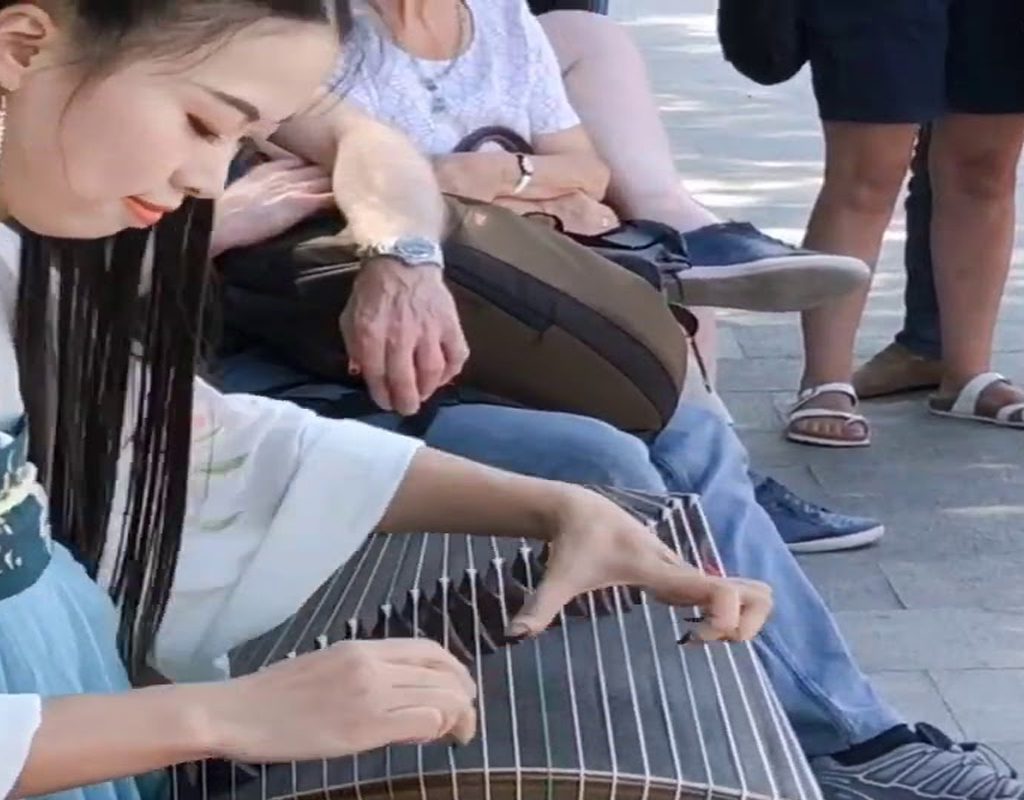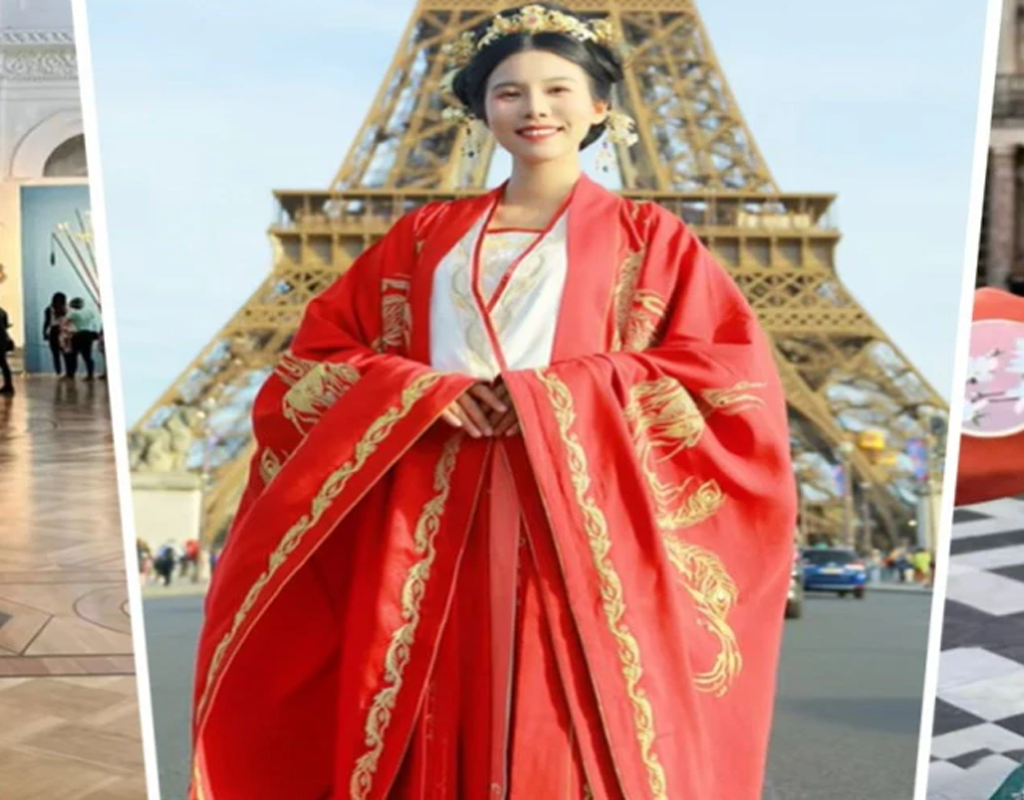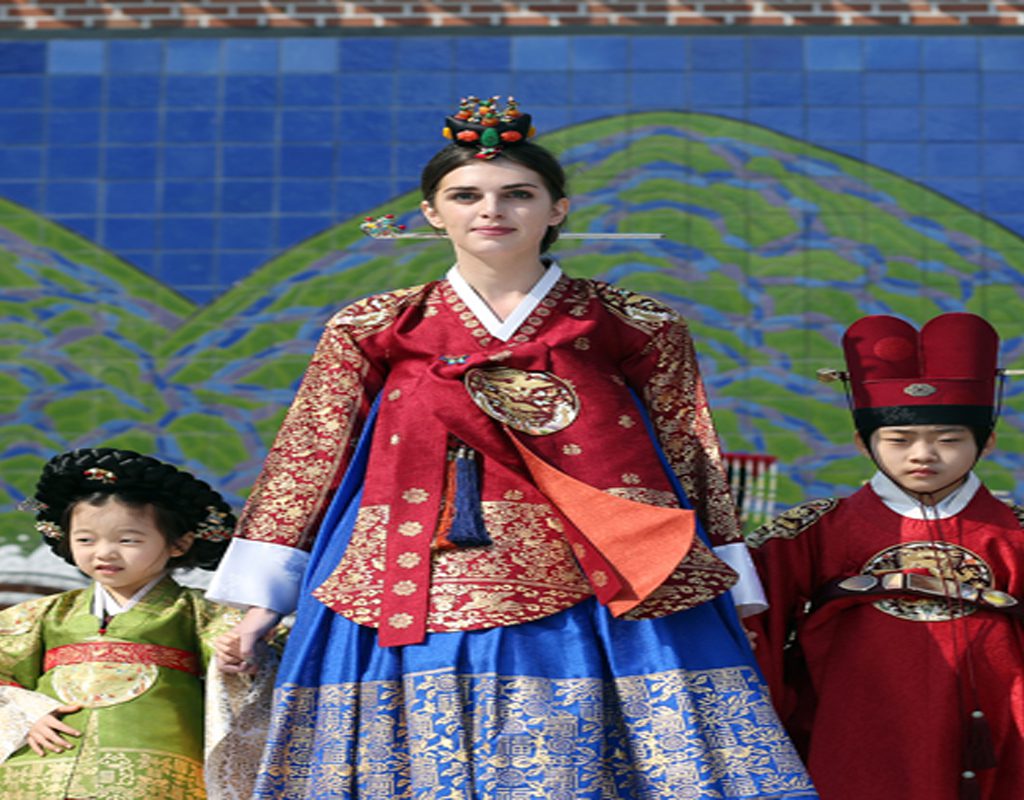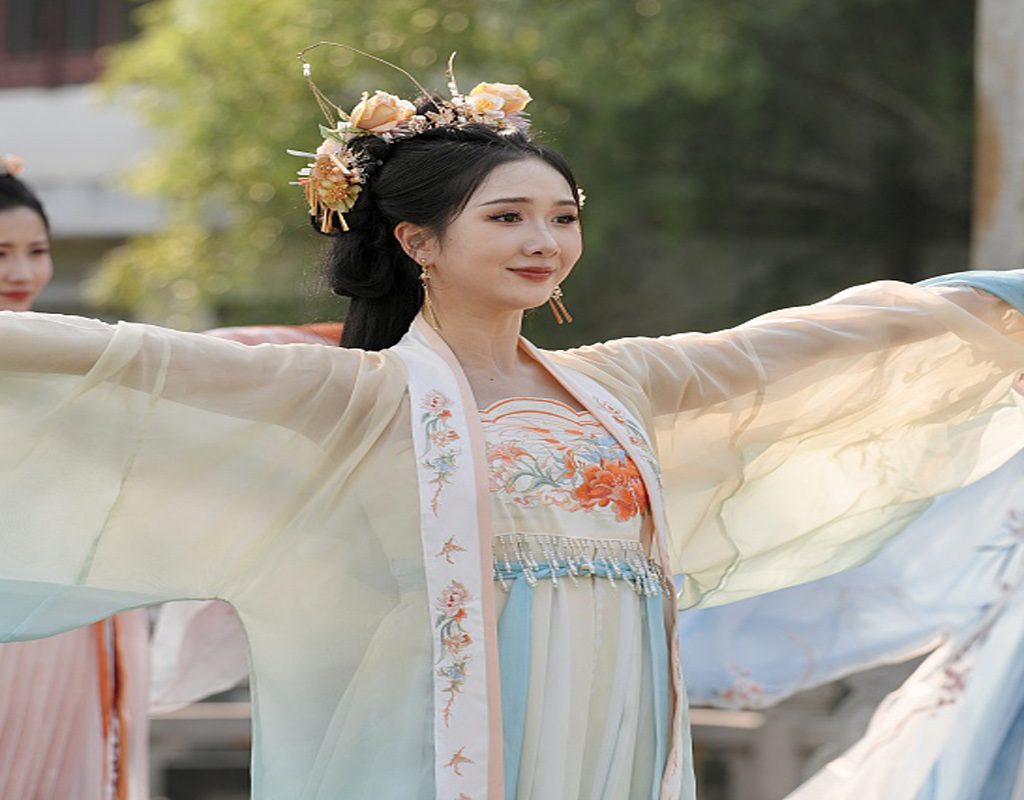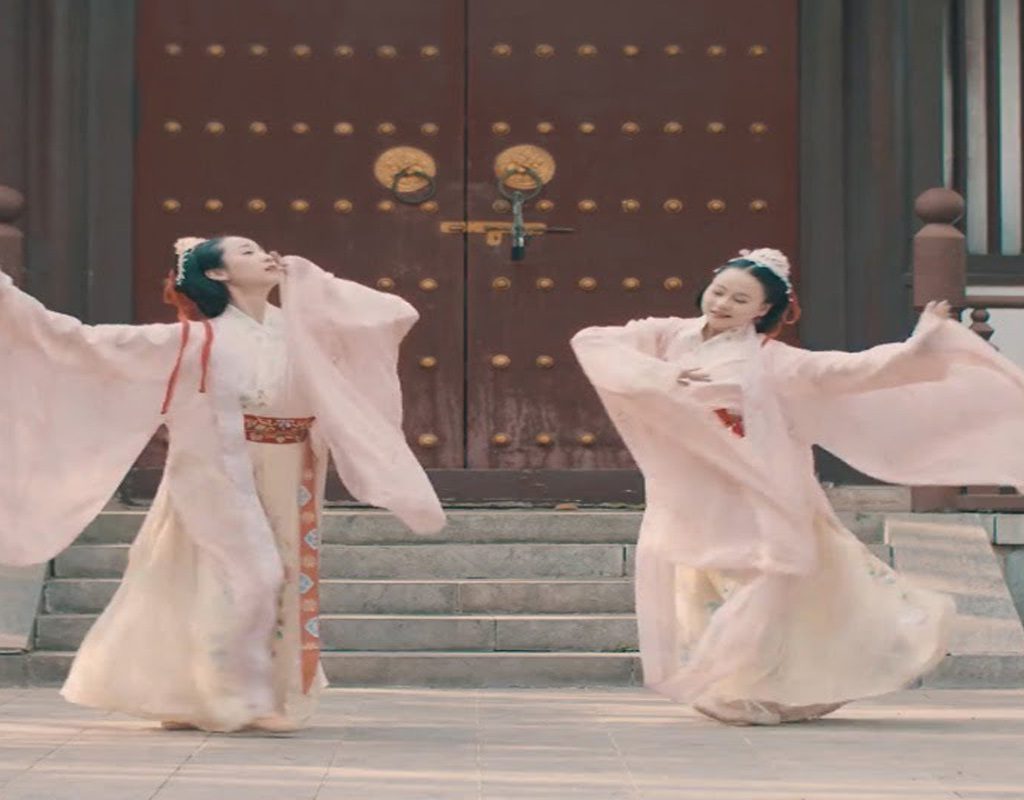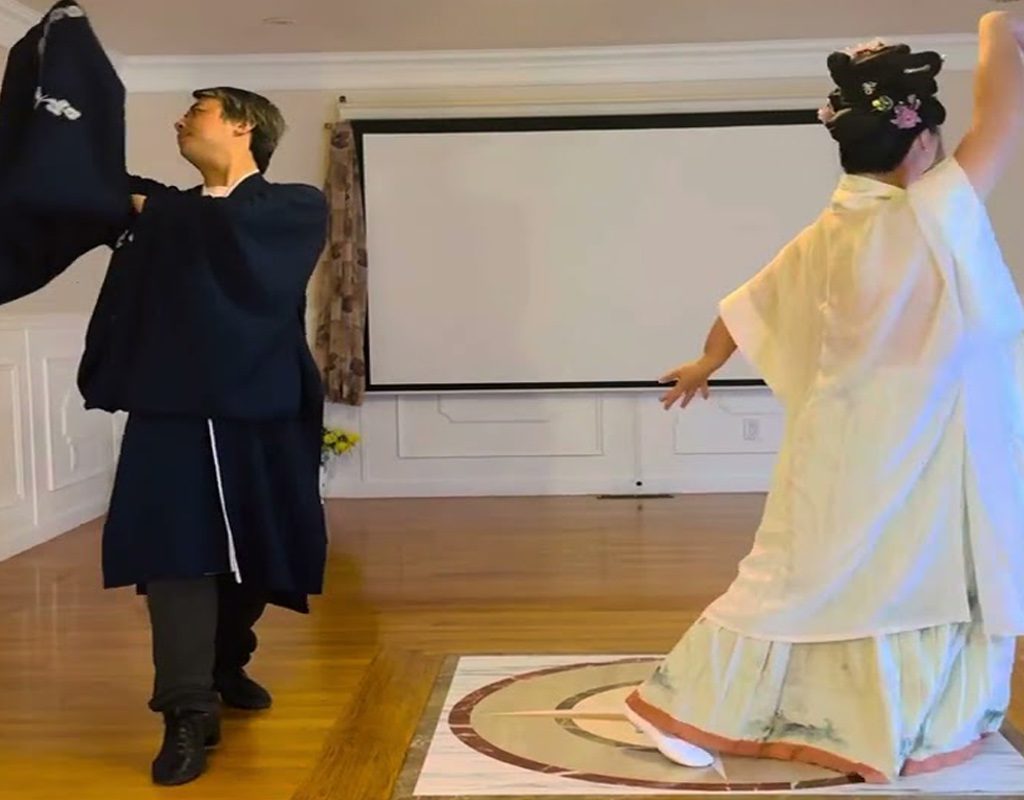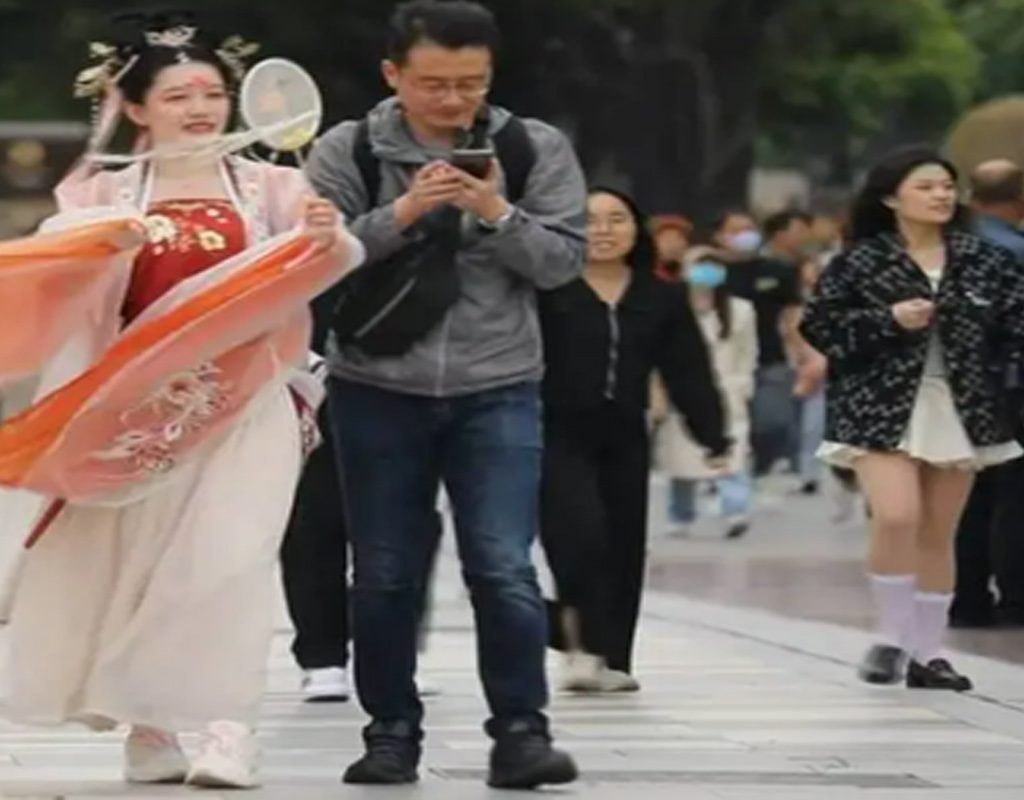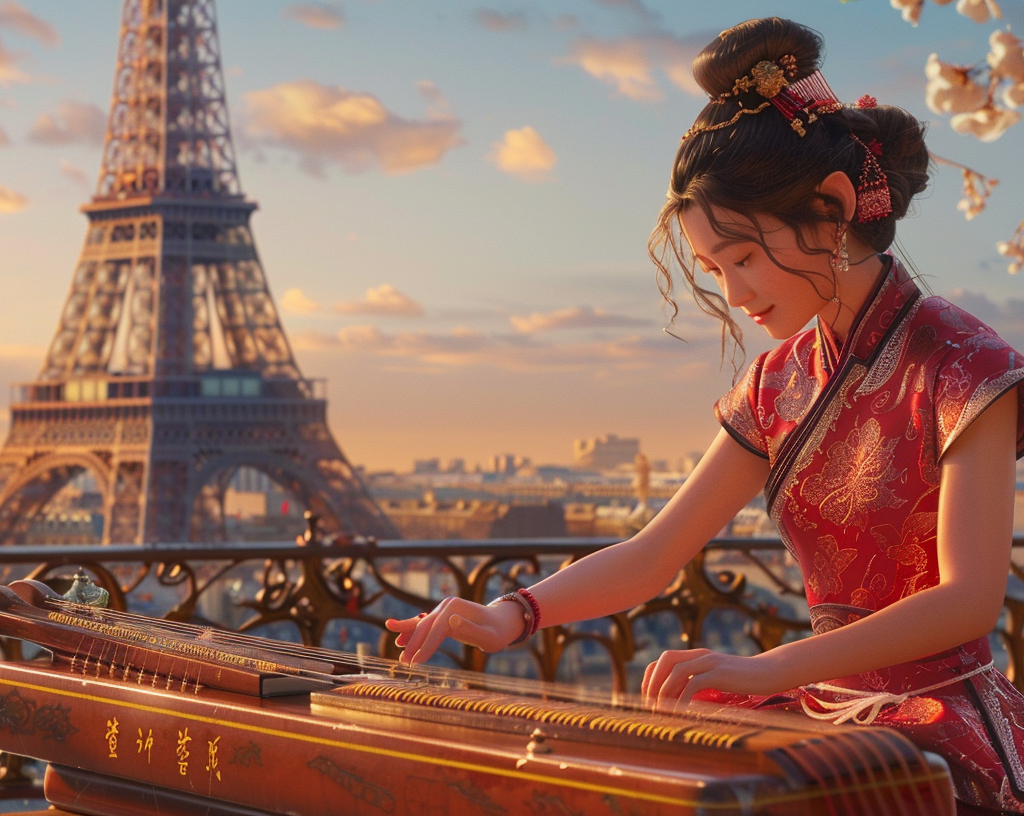
As an important part of traditional culture, Chinese hanfu, especially Ruqun, is full of deep cultural connotation and unique aesthetic value in its material, cutting process and wearing characteristics.
Material used:
Silk: The most commonly used material for hanfu is silk, because it is soft, smooth, breathable and has good draping properties, which can emphasize the elegance and flow of hanfu. There are many kinds of silk, such as damask, Luo, silk, satin, etc. Different kinds of silk are different in texture, luster and feel.
Hemp: Hemp is also one of the commonly used materials for hanfu, especially for summer clothing. Hemp cloth is breathable, cool and comfortable, which is in line with the ancient people’s pursuit of natural, simple life concept.
Cotton: Cotton is also used in hanfu production, especially in winter or in garments that need to keep warm. Cotton is soft, warm and suitable for making thick hanfu.
Cutting process:
Plane Cut ting: The cutting process of hanfu is based on plane cutting, i.e. drawing the shape of the garment directly on the fabric and then cutting along the lines. This way of cutting retains the integrity of the fabric, making the hanfu fit the body and show smooth lines when worn.
Lapel design: One of the main features of hanfu is the lapel design, which means that the front lapel is divided into left and right parts, which are connected by buttons or ties. This design not only conforms to the aesthetic concepts of ancient people, but also facilitates wearing and taking off and adjusting the tightness.
Wide robe and big sleeves: Another distinctive feature of Hanfu is the wide robe and big sleeves, i.e., the robe is loose and the sleeves are wide. This design is not only able to adapt to people of different body types to wear, but also able to show a dignified and generous temperament.
Wearing characteristics:
Layers: hanfus pay attention to the sense of hierarchy when wearing, usually from top to bottom in order of clothing, clothing, skirts and other parts. This layered design not only enriches the visual effect of clothing, but also adapts to different occasions and climates.
Accessories: hanfu is often worn with a variety of accessories, such as headdresses, belts, jade pendants, etc. These accessories not only add to the costume, but also make it more comfortable for different occasions and climates. These accessories not only add a sense of splendor to the clothing, but also highlight the identity and status of the wearer.
Attention to et iquette: hanfu as an important part of traditional culture, its wear also has a certain etiquette. In specific occasions and ceremonies, hanfu wear need to follow certain norms and etiquette requirements, in order to reflect the respect for traditional culture and heritage.
In conclusion, the material, cutting process and wearing characteristics of Chinese hanfu reflect the aesthetic concepts and lifestyles of ancient people, and also provide us with a valuable carrier for understanding and passing on traditional culture.

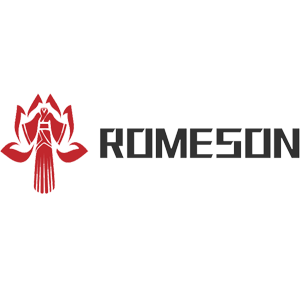
 Cart is empty
Cart is empty 
